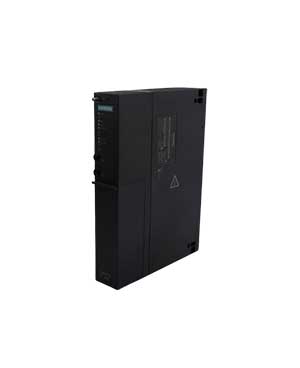Understanding Drives in Industrial Automation
Drives are essential components of industrial automation systems, responsible for controlling the speed, torque, and direction of electric motors. In this comprehensive guide, we explore the significance of drives, their types, functions, applications, and the evolving role of drive technology in modern manufacturing processes.
Introduction to Drives:
Drives, also known as motor drives or variable frequency drives (VFDs), are electronic devices that regulate the operation of electric motors by varying the frequency, voltage, and amplitude of the electrical supply. By adjusting these parameters, drives can control the speed, torque, and direction of motors, enabling precise and efficient operation in a wide range of industrial applications.
Types of Drives:
- AC Drives: AC drives, also known as variable frequency drives (VFDs), are used to control the speed of AC induction motors by varying the frequency of the electrical supply. AC drives are widely used in applications such as pumps, fans, conveyors, and compressors, where precise speed control is required.
- DC Drives: DC drives control the speed and torque of DC motors by regulating the voltage and current supplied to the motor. Although less common than AC drives, DC drives are still used in applications such as steel rolling mills, cranes, and hoists, where DC motors offer specific advantages.
- Servo Drives: Servo drives are specialized drives used with servo motors to provide precise position, velocity, and torque control in high-performance motion control applications. Servo drives are commonly used in robotics, CNC machines, packaging machinery, and other precision equipment.
Functions of Drives:
Drives perform several key functions within industrial automation systems:
- Speed Control: Drives regulate the speed of motors by adjusting the frequency and voltage of the electrical supply, allowing operators to match motor speed to process requirements and optimize energy efficiency.
- Torque Control: Drives adjust the torque output of motors by controlling the current supplied to the motor windings, enabling precise control of motor performance and load handling.
- Direction Control: Drives control the direction of motor rotation by changing the polarity of the electrical supply, facilitating bi-directional operation and reversing of motors as needed.
- Acceleration and Deceleration: Drives provide smooth acceleration and deceleration profiles for motors, minimizing mechanical stress and wear on equipment and ensuring smooth operation of machinery.
Applications of Drives:
Drives are used in a wide range of industrial applications across various industries, including:
- Manufacturing: In manufacturing plants, drives control the speed and operation of machinery such as conveyors, pumps, fans, mixers, and extruders, optimizing production processes and ensuring product quality.
- Material Handling: In material handling applications such as warehouses, distribution centers, and airports, drives control the operation of conveyor systems, cranes, hoists, and automated guided vehicles (AGVs), facilitating efficient movement and handling of goods.
- HVAC Systems: In heating, ventilation, and air conditioning (HVAC) systems, drives regulate the speed of motors powering fans, pumps, and compressors, allowing for precise control of airflow, temperature, and humidity levels.
- Renewable Energy: In renewable energy systems such as wind turbines and solar photovoltaic (PV) systems, drives control the operation of generators and inverters, optimizing energy production and grid integration.




















